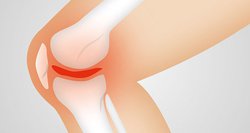You’ve asked your orthopaedic surgeon basic questions before surgery. You’ve had a hip replacement procedure. Now it’s time for you to rest. Getting a sufficient amount of rest and sleep after surgery is essential in the recovery process, but in our experience many patients have more questions and concerns about how their post-op experience will be.
“How long will my recovery take? What can or can I not do? Will I still be in pain?”
These questions are normal and deserve an answer. While every patient experience is different, we’re here to break down the average recovery process that our patients experience after a hip replacement to help you plan for your post-up recovery.
Early Stages
Once patients are discharged from the hospital, they will need a walker with a gradual transition to a cane, then eventually to no assistive device. Make sure your home has been prepared for you and any help you may need has already been arranged before surgery. In the first few weeks following the procedure, you may still need to take prescribed pain medications from your orthopaedic surgeon to help ease any discomfort.
What is known as a short-term recovery occurs when the patient is able to walk around their neighborhood without the aid of a cane, which could take anywhere from four to six weeks. During this time, it’s crucial to keep in contact with your doctor to discuss any issues you experience and to go over how the healing process is progressing.
Physical therapy is also used in the short term recovery phases, beginning the day of surgery and usually continuing for about 8 weeks post-op. It’s important to adhere to exercise and PT guidelines to support your recovery to the fullest.
Long-Term
Long term recovery refers to when you’re able to walk around, head back to work, complete simple tasks, and complete any post-op physical therapy. Even though you’re likely to feel better within the initial weeks after a procedure, your body continues to make a long-term recovery for, on average, six months. This stage involves the incision wound healing and the hip replacement fully adjusting to the patient’s body. This is when it can be especially important to avoid certain movements to ensure your body is healing properly. Your physical therapist will explain some of these movements, but some common ones to avoid are pivoting at the hips and bending at the hip beyond a 90 degree angle. If you experience any issues during later recovery stages, you should contact your orthopaedic surgeon as soon as possible.
While rest, slow movements, and help from medication and physical therapy will help your body heal, speaking with your doctor is also essential. This way, you can explain any pain or problems and correct them sooner rather than later. To help you on the road to recovery, the team at Advanced Surgical Hospital can assist in answering your questions and providing advice during the process. For more information on Advanced Surgical Hospital, hip replacement surgery, post-op exercises, physical therapy, and our other services, contact us today.

